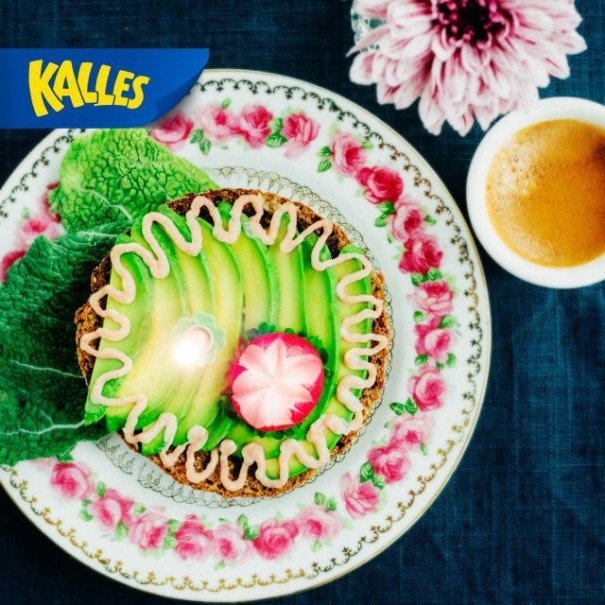
Everyone Likes Pancakes, But What About Fish Eggs in a Toothpaste Tube?

Everyone Likes Pancakes, But What About Fish Eggs in a Toothpaste Tube?
Kalles Kaviar in Sweden
To a Jewish kid who grew up in the American South, where pickled herring in cream sauce is more likely to induce dry-heaving than salivation, Swedish hotel breakfasts are a revelation.
Imagine the most sumptuous Continental breakfast buffet. Now replace three quarters of what you’ve imagined with vast platters of cured fish, smoked fish, pickled fish, and fish spreads. Muted whites and grays and pinks scattered here and there with ghostly slivers of white onion, dill fronds, and dark green capers.
Then, at the end, always at the end, imagine a bright blue toothpaste tube with a red cap, lettering so yellow it twinkles, and the smiling face of a blonde child eating toast. Inside, you find one of Sweden’s more particular foods: a creamy paste of smoked cod roe so fishy and so salty you might as well be breakfasting on a tide pool pulsed in a blender.
Kalles kaviar, as it’s called, has been around since the mid-1950s, though it’s based on a recipe several centuries older than that, and is produced by Gothenburg-based Abba Seafood.
In a class of foods with Britain’s Marmite and Australia’s Vegemite, the primary appeal of Kalles may lie in the fact that it is so characteristically Swedish that no non-Swede could want to eat it. A culinary in-joke, if you will. In fact, its clever ad campaign features Swedes who set up stalls around the world—New York, Los Angeles, Budapest, Costa Rica, Switzerland, even fish-loving Tokyo—to let the locals try their kaviar. “It’s great, isn’t it?” they ask eagerly. The response is nearly always some variant of “No.”
In spite of this reception, as Ikea internationalizes Swedish culture, it brings Kalles kaviar to its in-store marketplaces around the globe. You’ll find it tucked between bags of tiny Greenland shrimp, tins of anchovy-style sprat fillets, and jars of herring roe. Ikea is where I first discovered Kalles in a quest to recreate a traditional smörgåstårta, or savory sandwich cake.
A few months later, at a dinner with some Swedes on an island off the country’s Baltic coast during its annual political bacchanal, conversation turned to smörgåstårta, which turned to Kalles kaviar. Faces softened into nostalgic smiles. One man reminisced about his time living in India, decades ago, back before you could find Swedish tastes in any Ikea. The one thing he brought with him, to remind him of home, was a tube of Kalles kaviar. He used it sparingly, like saffron—a drop on a piece of toast, the slightest squeeze over slices of hardboiled egg—so it could last during his time in a faraway land. (Until his roommate discovered it and sucked the tube dry one briny afternoon.)
It’s too reductionist to squeeze all of Swedish culture into a bright blue tube of Kalles. But if you want to taste a Swedish breakfast, really taste it as only its people can, forgo pancakes and lingonberries—who wouldn’t like pancakes and lingonberries?—and spring for kaviar. Remove the red cap. Squeeze over slices of hard-boiled eggs on toast. Take a bite. Taste the sea. Welcome to Sweden.